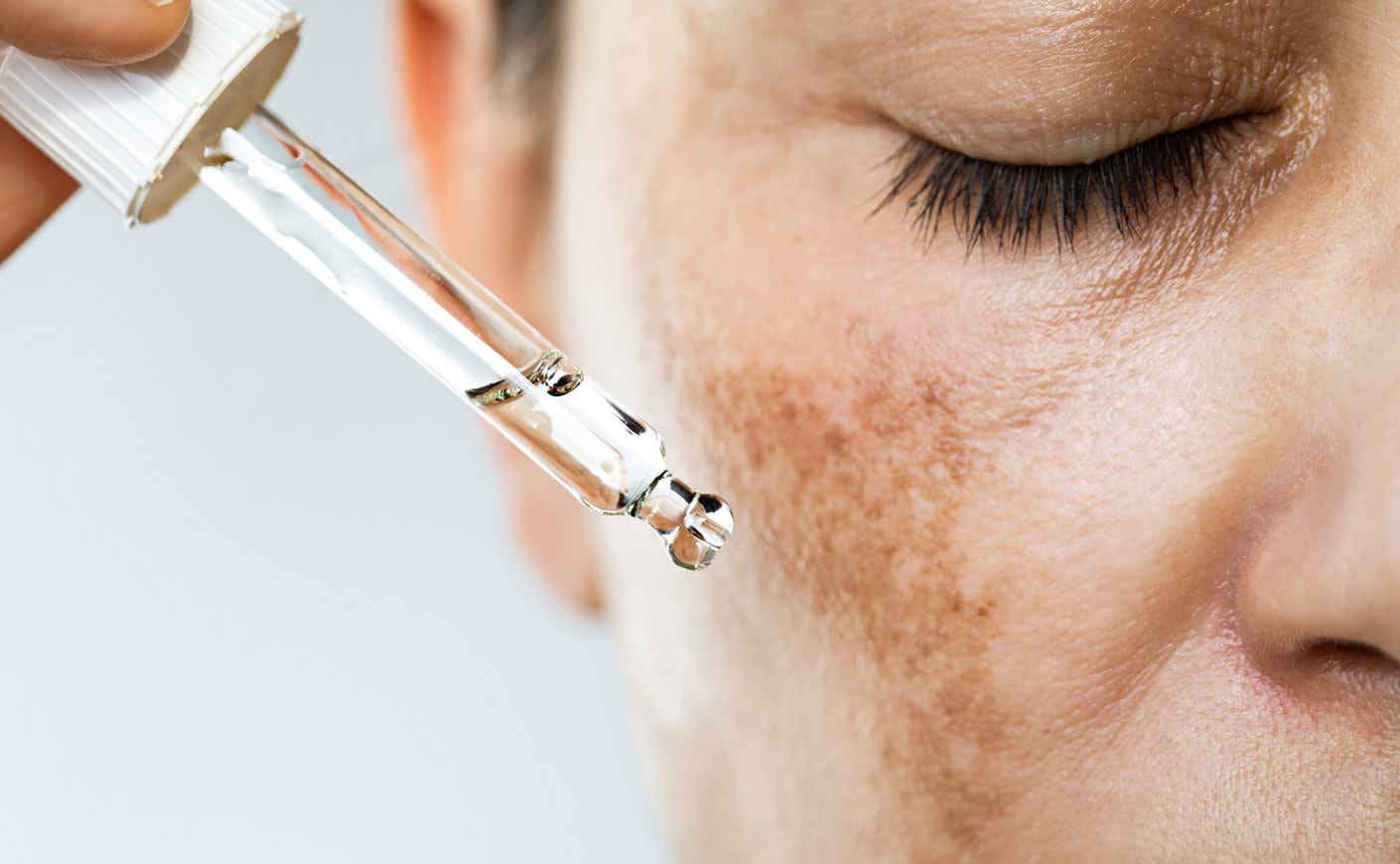Have you noticed that you’ve accumulated some kind of hyperpigmentation (the fancy term for sun spots) on your face? If you own a pair of leopard slides, you’re obviously aware that some spots are considered beautiful or stylish while others are definitely not. The beautiful ones — like these on a magnificent feline — evolved for the purpose of camouflage, in an environment, “full of trees and bushes and stripy, speckly, patchy-blatchy shadows,” Rudyard Kipling once wrote. You, on the other hand, are most likely wearing your fashionable print for the opposite reason: to stand out and make a statement.
There’s a grab bag of explanations for the popularity of animal prints, the most prominent being that they evoke a subconscious combination of fear and arousal, power and eroticism. Not to get too into the weeds (or the bush) but since the spots worked for the leopard, it does indicate evolutionary success, which gives the look a certain power. My friend Bernhard Fink, an evolutionary psychologist, recently reminded me that it’s never been easy or inexpensive to hunt for animal skins or prepare them for wear. Additionally, if our ancestors had a hard time securing certain goods, they had higher value. In spite of changing cultural attitudes — like those toward fur — many associations relating to status are hardwired in our brains. Hence, our continuing attraction to leopard print.
But wait, we're talking about the spots on your face. They could be any number of things, so it’s a good idea to have them checked by a board-certified dermatologist, says board-certified dermatologist Laurel Naversen Geraghty, MD. If you're above a certain age, you're most likely observing age spots or sun spots (called lentigines) — and we have good reason not to be fans of them.
A couple of studies (like this one and this one) demonstrate that the facial skin age of women is influenced not only by the appearance of lines and wrinkles, but also by unevenness, discoloration, and a decrease in light reflection (how light bounces off the skin). Researchers found both men and women are remarkably sensitive to even small changes in skin color distribution. The happier news: When discoloration is removed, faces are judged to be more attractive. Speaking of hard-wiring, skin clarity, evenness of tone, and a slight blush are all cues to youth and good health, and consequently a good choice of mate — in case you’re interested.
So how to remove the offending patchy-blatchy? Geraghty suggests topical skin brighteners and especially likes bleaching creams (like hydroquinone), topical retinoids (over-the-counter retinol cream or prescription tretinoin cream), or adapalene gel, in La Roche Posay Effaclar Adapalene gel. One of her very favorites, an ingredient that’s been used in Asia for some time, has finally caught on in the U.S. It’s called tranexamic acid; used topically, it gradually brightens and evens pigment safely, visibly, and without a lot of irritation. Here’s Geraghty’s recommendation for a product with this ingredient.
If you still see no fading after around three months of consistent use, you might want to try an in-office treatment. A chemical peel, laser, or light therapy are all good choices, says Geraghty. Intense pulsed light — aka IPL, broad band light, or BBL — is an in-office procedure that Geraghty says hurts, but is worth it for rapid, noninvasive improvement in skin tone. (I’ve had this treatment several times and it feels like rubber bands snapping against your face. If you have an older brother, it might feel familiar.)
She also loves pico lasers for stubborn sun spots. That's the fastest laser wavelength available, and is a powerful but low-pain way to reduce or erase individual spots. I’ve also had a couple of pico treatments and thought my skin looked fresher for a few weeks. It didn’t hurt; it felt like the sting you get when skiing down a mountain in a light snowfall.
However, Geraghty points out that none of this will help without strict, consistent sun protection, preferably with a broad spectrum SPF 50+ tinted sunscreen containing iron oxide. And until your remedies start to work, you can do your own kind of camouflage in the urban (or suburban) jungle. I’ve always loved Bobbi Brown concealers. She has a line called Jones Road and she was kind enough to send me a box of the stuff: These concealer pencils come in 25 shades from fair to dark.
Reprinted with permission from How Not to F*ck Up Your Face. Val Monroe spent 16 years as the beauty director at O, The Oprah Magazine and has been an editor at Ms., Redbook, Self, and Parenting magazines, among others, a contributing writer at Parents, Entertainment Weekly, The Cut at New York Magazine, and has written hundreds of articles for national publications; she’s now a contributor at Allure Magazine. Subscribe to her weekly Substack newsletter.









